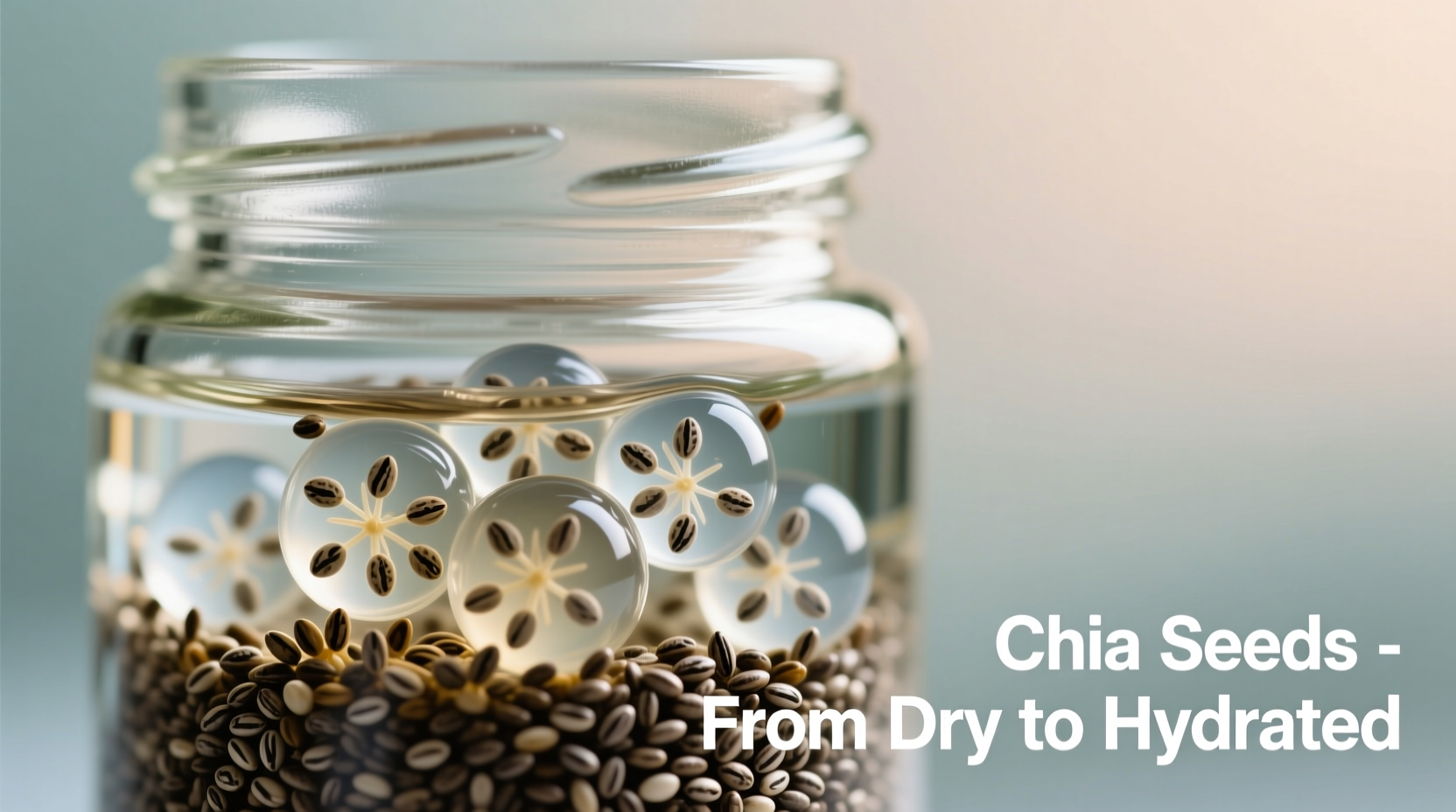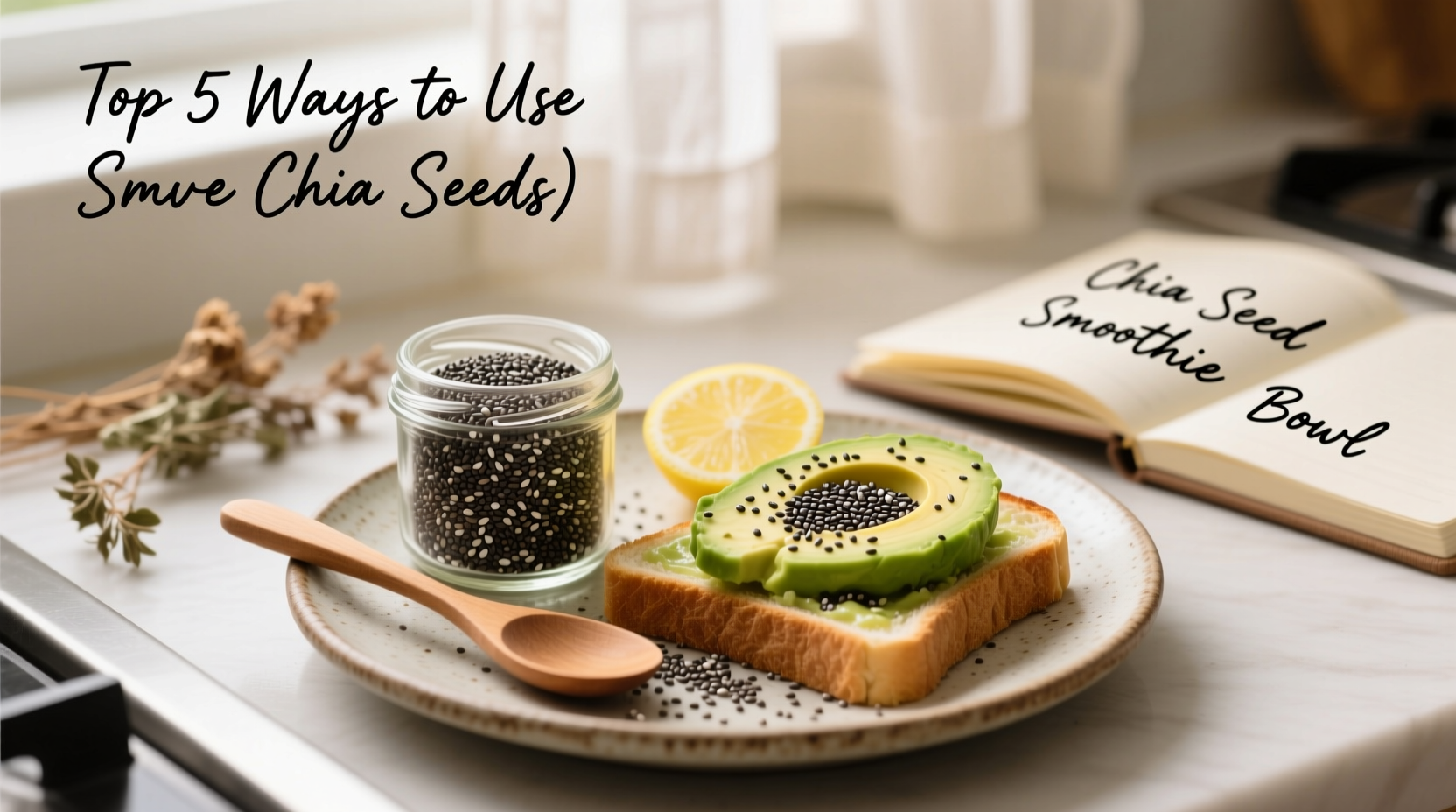Chia seeds transform from tiny black specks into nutritional powerhouses when prepared correctly. These ancient Mexican superfoods deliver 5g of fiber and 4g of protein per tablespoon, but their true benefits emerge only with proper preparation. This guide reveals exactly how to unlock chia's full potential through evidence-based techniques validated by nutrition science.
Mastering Basic Chia Preparation
Understanding chia seed hydration is your first step to maximizing benefits. Unlike flaxseeds, chia doesn't require grinding to access nutrients, but proper soaking dramatically improves digestibility and nutrient absorption.
| Preparation Method | Water Ratio | Soaking Time | Nutrient Availability |
|---|---|---|---|
| Dry consumption | N/A | Immediate | 35% fiber absorption |
| Quick soak | 1:4 (seed:water) | 20 minutes | 70% fiber absorption |
| Overnight soak | 1:10 (seed:water) | 8+ hours | 95% fiber absorption |
Research from the National Institutes of Health confirms that properly hydrated chia seeds increase soluble fiber availability by 170% compared to dry consumption. The gel-like coating formed during soaking slows digestion, stabilizing blood sugar while enhancing mineral absorption.

Your Morning Nutrition Boost
Start your day with chia-enhanced breakfasts that provide sustained energy. The traditional Mexican chia fresca remains the gold standard for morning hydration and nutrition:
- Mix 1 tbsp chia seeds with 1 cup water, 1 tbsp lime juice, and 5 mashed strawberries
- Let sit 15 minutes, stirring twice to prevent clumping
- Add ice and mint for refreshing morning hydration
This preparation delivers 10g of complete plant protein and maintains hydration longer than sports drinks, according to a 2019 Journal of Food Science study. For busy mornings, pre-portion chia pudding in mason jars with 3:1 water-to-seed ratio and refrigerate for up to 5 days.
Culinary Applications Beyond Breakfast
Chia seeds excel as versatile kitchen allies when used correctly. Their neutral flavor and binding properties make them ideal for multiple applications:
Egg Replacement Mastery
Create perfect vegan bindings with this precise ratio:
- 1 tbsp chia seeds + 2.5 tbsp water = 1 egg equivalent
- Let mixture sit 10 minutes until gel forms
- Use in baked goods, meatloaf, or veggie burgers
Sauce and Soup Thickening
Add nutritional density without altering flavor:
- Stir 1 tsp chia gel per cup of liquid
- Works better than cornstarch for gluten-free diets
- Maintains thickness through freeze-thaw cycles
Avoiding Common Chia Mistakes
Even health-conscious eaters make these critical errors:
Insufficient Hydration
Consuming dry chia without adequate fluids causes digestive discomfort. The FDA notes that chia absorbs 10-12 times its weight in water. Always consume hydrated chia with additional fluids.
Improper Storage
Exposed to air and light, chia's delicate omega-3s oxidize within weeks. Store in airtight containers in the refrigerator for up to 6 months, or freeze for year-long freshness. Discard if you detect any rancid odor.
When Chia Might Not Be Right For You
While generally safe, certain conditions require caution:
- Individuals on blood thinners should consult doctors due to chia's natural anticoagulant properties
- Those with swallowing difficulties should avoid dry chia consumption
- People with inflammatory bowel conditions may need to limit intake during flare-ups
Registered dietitians at the Academy of Nutrition and Dietetics recommend starting with 1 tablespoon daily, gradually increasing to assess tolerance.
Maximizing Your Chia Experience
For optimal results, rotate your chia applications throughout the week. Monday's chia pudding becomes Wednesday's smoothie booster and Friday's baking ingredient. This variety prevents palate fatigue while ensuring consistent nutrient intake. Remember that properly prepared chia should feel smooth, not gritty - if you detect crunchiness, your seeds need longer soaking.
Frequently Asked Questions
Can you eat chia seeds without soaking them?
Yes, but with important precautions. Dry chia seeds absorb moisture in your digestive tract, potentially causing discomfort. The FDA recommends consuming dry chia with at least 10 times its volume in liquid. For optimal nutrient absorption and digestive comfort, soaking remains the preferred method.
How long do prepared chia seeds last in the refrigerator?
Properly stored chia gel maintains quality for 5-7 days in airtight containers. Chia pudding with added dairy or fruit lasts 3-4 days. Always check for sour odors or mold before consumption. For extended storage, freeze chia preparations in ice cube trays for up to 3 months.
What's the difference between black and white chia seeds?
Nutritionally identical, with minor antioxidant variations. Black chia contains slightly more anthocyanins, while white chia has marginally higher omega-3 content. The difference is negligible for dietary purposes - choose based on availability and visual preference in your recipes.
Can chia seeds help with weight management?
Research in the Journal of Nutrition shows chia's high fiber content promotes satiety, reducing calorie intake by 25% in subsequent meals. The soluble fiber forms a gel that slows gastric emptying, stabilizing blood sugar and reducing cravings. For best results, consume hydrated chia 20-30 minutes before meals.
How much chia should you eat daily?
The recommended daily intake is 1-2 tablespoons (15-30g). This provides optimal fiber and omega-3 benefits without overwhelming your digestive system. Start with 1 teaspoon daily, gradually increasing over 2-3 weeks to assess tolerance. Consult your healthcare provider if taking medications affected by fiber intake.











 浙公网安备
33010002000092号
浙公网安备
33010002000092号 浙B2-20120091-4
浙B2-20120091-4